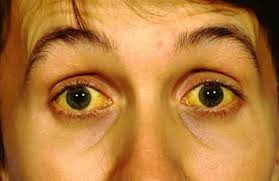There's no treatment for
jaundice as such, but disease can be managed by managing symptoms and causes of
jaundice.
Pre-hepatic jaundice
In treating pre-hepatic jaundice, the objective is to prevent the rapid
breakdown of red blood cells that's causing the level of bilirubin to build up
in the blood.
In cases of infections, such as malaria, the use of medication to treat the
underlying infection is usually recommended. For genetic blood disorders, such
as sickle cell anemia or thalassemia, blood transfusions may be required to
replace the red blood cells.
Gilbert's syndrome doesn't usually require treatment because the jaundice
associated with the condition isn't particularly serious and doesn't pose a
serious threat to health.
Intra-hepatic jaundice
In cases of intra-hepatic jaundice, there's little that can be done to repair
any liver damage, although the liver can often repair itself over time.
Therefore, the aim of treatment is to prevent any further liver damage
occurring.
For liver damage that's caused by infection, such as viral hepatitis or
glandular fever, anti-viral medications may be used to help prevent further
damage.
If the damage is due to exposure to harmful substances, such as alcohol or
chemicals, avoiding any further exposure to the substance is recommended.
In severe cases of liver disease, a liver transplant is another possible
option.
Post-Hepatic Jaundice
In most cases of post-hepatic jaundice, surgery is recommended to unblock the
bile duct system.
During surgery, it might be required to remove:
The gallbladder
A section of the bile duct system
A section of the pancreas to prevent further blockages occurring
NHP provides indicative information for better understanding of health. For any
diagnosis and treatment purpose consult physician.



 Contact Us
Contact Us






 Hospitals
Hospitals
 Doctors
Doctors
 Diagnostic
Diagnostic
 Pharmacy
Pharmacy
 Health Tips
Health Tips
 Blog
Blog

























Comments